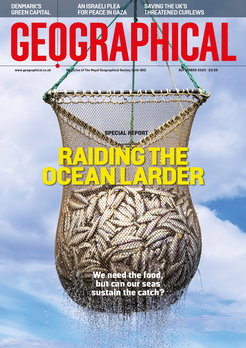
Maxim Samson explores the boundaries and belts which bring us together and keep us apart, in fascinating detail
Review by Bryony Cottam
The modern world is divided by borders. Some, such as the mountainous frontier between France and Andorra, have remained unchanged for hundreds of years. Others, including the newly drawn boundaries of South Sudan, are much younger. They carve up our continents and influence the millions of people who live within them, but these lines aren’t the focus of Maxim Samson’s book, Invisible Lines.
Instead, his interest lies in the many invisible boundaries that we constantly encounter and cross in our everyday lives, often without thinking about them. These range from the cultural – the social boundary that tells us not to step beyond our front door in just our underwear, for example – to the functional, such as the International Date Line, the imaginary longitudinal line created to mark the boundary between two calendar days. Much less formal than national borders and often more symbolic than a physical barrier, these lines nevertheless shape how we act, feel and live.
One way in which they do this, says Samson, is by helping us to better understand our planet. He cites the Equator – ‘probably the most famous invisible line of all’ – as an example. It provides us with a plethora of information about the seasons, the shape, circumference and orbit of the Earth, and the movement of its ocean currents and winds. The Arctic treeline is another. Although generally visible to the eye (in some places it’s less of a line than a gradual transition), it isn’t the physical entity itself that holds power, Samson points out – rather it’s the ‘intangible meaning and possible consequences associated with it’. As with all of the boundaries featured in his book, he suggests that we look past the material that gives them substance (in this case, the forest) and instead focus on the boundary itself – the line along which the conditions on Earth become uninhabitable for trees and what the line’s current ongoing northward shift means with respect to all of life on Earth.
For as long as we’ve tried to understand our planet, we’ve also tried to shape it. Sometimes, says Samson, we’ve done this with good intentions (although, he cautions, the results haven’t always been beneficial) and boundaries have been created for these purposes, too. We saw this clearly during the height of the pandemic, when invisible lines were drawn up to contain the virus both globally – as each country imposed its own travel restrictions – and on a micro-scale, with social distancing. Similarly, the Chernobyl Exclusion Zone, which represents the limit beyond which radiation levels are no longer safe, and the self-imposed self-isolation of the English village of Eyam, a barrier against the bubonic plague outbreak in 1066, are both lines that were drawn up to protect people from hazards, whether natural or man-made.
However, lines can also be used to exclude, to claim territory and to divide one group from another – ‘us’ versus ‘them’. Perhaps the most obvious examples of all are the ghettos in Nazi-occupied Europe and the comprehensive apartheid system of racial segregation in South Africa. Similar divisions exist today in the Paris banlieues, the infamous 8 Mile Road in Detroit and in other cities around the world. ‘Consider for instance the boundaries of so-called ethnic enclaves and gay villages,’ Samson writes, ‘neighbourhoods which tend to emerge in large part as a result of exclusion, via discriminatory housing and employment policies and practices and/or the threat of violence elsewhere.’
Sometimes these lines have been drawn by groups themselves, as a way to preserve their culture or language, as is the case in Montreal, where Anglophones live predominantly in the west and Francophones predominantly in the east. Other lines are designed to facilitate religious practices or laws, and there are many more that exist entirely within our minds. ‘When we refer to ideas such as “north-south divide”, “city” and “suburb”, “neighbourhood” and “ghetto”, all of which involve the drawing of boundaries, what are we suggesting about identity and belonging?’ These are questions that we rarely ask ourselves, says Samson, yet subconsciously, we maintain an idea of where we ‘fit’ within it all and where our own boundaries allow us to go.
Samson, a geography professor at DePaul University in Chicago, says that he likes to signpost people towards boundaries that many, or even most, will never have considered. Invisible Lines, does exactly that. Among the 30 highlighted by the book – far from an exhaustive list, he points out – several are particularly obscure and intriguing, including the curious circumstances of Bir Tawil, a wedge of land that nobody wants, and the Qinling-Huaihe Line, which divides China in two. However, it’s his intricately detailed explanation of how each invisible line came to be, as well as what it can tell us about the world and our place within it, that makes this book such a fascinating read.
Invisible Lines will be published by Profile Books on 24 August. Read an extract on our website here.




